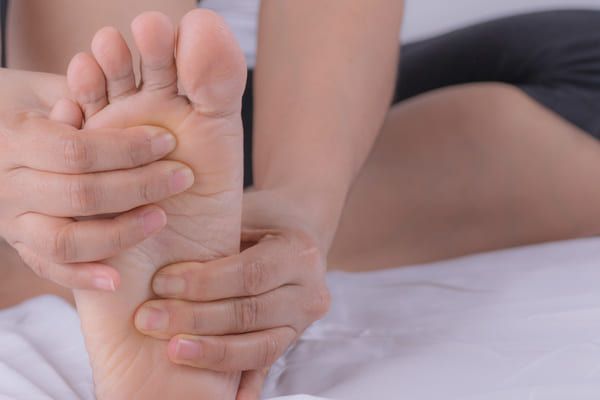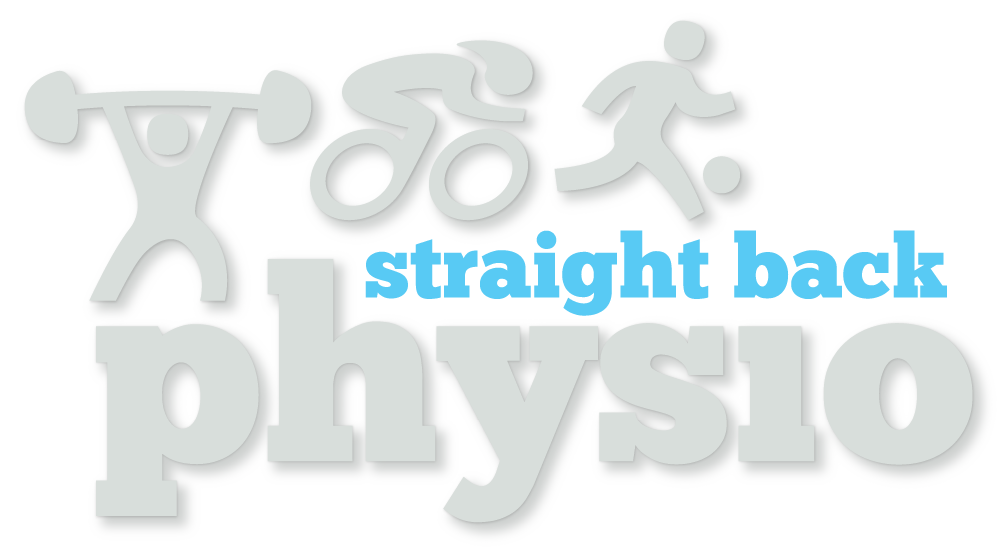physiotherapy for Foot or Ankle Pain in Cheltenham

Causes of foot and ankle pain
We are all prone to ankle and foot pain because we work our foot muscles and bones more than any part of our body. Taking good care of your feet is crucial as it is painful to walk, move, or exercise when your feet are in pain.
Foot and ankle pain can have many different causes but some of the main causes of foot and ankle pain are due to physical trauma, overuse, medical conditions, and weak muscles.
Types of foot and ankle pain
Some of the most common types of foot and ankle pain conditions include Plantar Fasciitis, Achilles Tendonitis, and Ankle Sprains. Although we also see a wider range of conditions at our physiotherapy clinic.

Plantar Fasciitis
Plantar Fasciitis, also known as Policemans Heel, is an inflammation of the Plantar Fascia. One of the main symptoms is a sharp pain around the bottom of your foot, around your heel and arch. Plantar Fasciitis is common in runners and can be caused by the type of shoes you wear, especially high heels for women, your foot structure, playing sports, exercising without stretching or warming up, and the type of surfaces you walk or exercise on.
Treatment can include hands-on joint mobilization, shockwave therapy, stretching, myofascial release, and strapping techniques.
Achilles Tendonitis
Achilles tendonitis is an overuse injury of the achilles tendon which is the band of tissue that connects the calf muscles at the back of the leg to your heel bone. We often see patients suffering from achilles pain when running, although it is also common to older people who play sports such as tennis or running only at the weekends, as the tendon weakens with age.
Although complete rest and anti-inflammatory pain killers may improve mild symptoms, the mainstay of treatment is by physiotherapy to build up the strength and function of the achilles tendon. We also use dry needling, and shockwave therapy to help ease the pain.


Ankle Sprains and Strains
Suffering from an ankle injury is painful and affects the quality of your everyday life. You may be uncomfortable or, in the worst of circumstances, lose your entire mobility. Depending on the severity of the injury, the recovery time for a sprained ankle is often lengthy. Physiotherapy is often the preferred treatment for ankle pain.
When you sprain your ankle, you injure the ligaments of your ankle. If you strain your ankle, you’ve injured the tendons of the muscles around your ankle, see above for achilles tendonitis. During your assessment we will diagnose which type of injury applies to you and treat you accordingly.
Treatment of ankle sprains primarily focuses on assisting with the healing of the ligaments. Ankle sprain physiotherapy treatments help to reduce swelling, improve weight bearing, and promote pain free range of movement. As the ligament progresses and heals, treatment will typically shift toward strength and stability to help restore the ankle’s previous level of function.

“I'm a kitesurfer and I had a niggling foot injury that was keeping me off the water, in fact I could barely walk! I just couldn't shake it off and it had been going on for a few months. After following some advice from the team at Straight Back Physio I was back on the water within 10 days :). I am very pleased with the results and would recommend Straight Back Physio to anyone with an injury that is hampering their movement.”
Nathan, Google review
physiotherapy for foot or ankle pain
- Reduced pain: We use a variety of techniques, including massage, stretching, and exercise, to help reduce pain and discomfort.
- Reduced risk of further injury: By using targeted exercises and stretches, physiotherapy can help strengthen the muscles around the foot and ankle, which can help improve stability and reduce the risk of future injuries.
- Avoiding surgery: By using non-invasive techniques to target the underlying cause of the pain, we can help you avoid more invasive treatments.
- No side effects:Unlike medication or surgery, physiotherapy does not carry the risk of complications or adverse reactions.
- Customised treatment plans: We’ll work with you to develop a bespoke treatment plan that takes into account your medical history, current condition, and recovery goals.
- Improved balance: Foot or ankle pain can affect your balance, making it difficult to stand, walk or run. Physiotherapy can help improve balance by using exercises and techniques that target the muscles and joints that support the foot and ankle.
- Improved range of motion: We can improve your range of motion by targeting the affected area, helping you move more freely and reducing the risk of further injury.
- Improved overall health: Physiotherapy can help improve overall health and wellbeing by promoting physical activity and reducing pain and discomfort.
Book now
For foot and ankle treatment in Cheltenham and the surrounding Gloucestershire areas we use a wide range of treatments that are tailored to help keep you pain and injury-free, we offer preventative services to maintain your well-being and enhance your activity levels.
We understand that some people may want to find out a bit more about the cost before they book an appointment at our physiotherapy clinic. Our unique save as you recover packages can save you up to 20% on the cost of a single session.
For most injuries our chartered physio can usually treat you within 4 to 8 sessions.
Insured
We can either work directly with your insurance company or we can provide receipts for patients who use cash-based plans so you can reclaim your treatment costs.
Not Insured
You can book an appointment on a self referral basis, without the need for seeing your GP first.
Why Choose Us
No other local physiotherapy clinic can offer you the same level of physiotherapy and rehabilitation that we can, simply because they don't have our level of experience and our in-house gym facilities.
This is how we gained our reputation of treating patients when other physios may have failed.
Contact Information
Quick Links
Our Location
© Copyright 2024 | All Rights Reserved | Straight Back Physio

